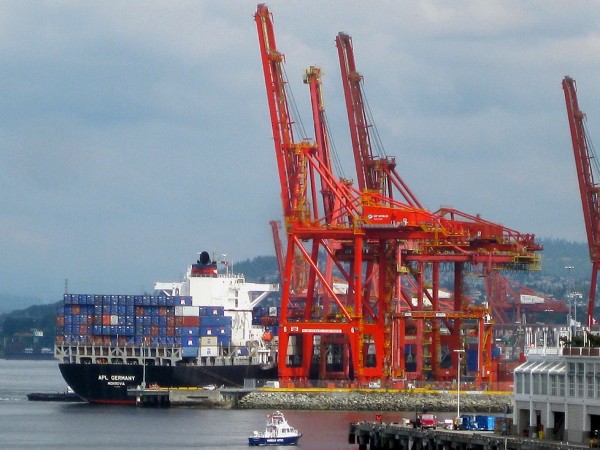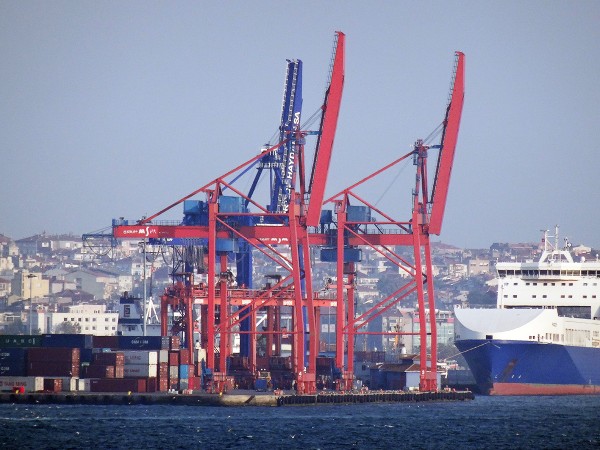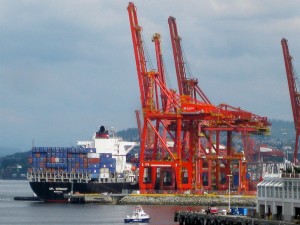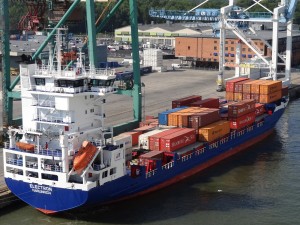 The 159 member countries of the World Trade Organisation have reached an agreement on liberalising trade. The deal, which was reached on 6 December 2013 at a meeting in Bali, is the first substantial agreement since the WTO was formed in 1995 (see Timeline: World Trade Organization for other agreements).
The 159 member countries of the World Trade Organisation have reached an agreement on liberalising trade. The deal, which was reached on 6 December 2013 at a meeting in Bali, is the first substantial agreement since the WTO was formed in 1995 (see Timeline: World Trade Organization for other agreements).
It involves simplifying customs procedures and making them more transparent, limited reductions in tariffs and quotas and allowing greater access to WTO members’ markets for exporters. It also permits developing countries to continue subsidising their agriculture in order to promote food security, provided the practice does not distort international trade. According to the WTO:
The trade facilitation decision is a multilateral deal to simplify customs procedures by reducing costs and improving their speed and efficiency. It will be a legally binding agreement and is one of the biggest reforms of the WTO since its establishment in 1995. …The objectives are: to speed up customs procedures; make trade easier, faster and cheaper; provide clarity, efficiency and transparency; reduce bureaucracy and corruption, and use technological advances. It also has provisions on goods in transit, an issue particularly of interest to landlocked countries seeking to trade through ports in neighbouring countries.
In a report published by the Peterson Institute in Washington, it is estimated that the extra trade will add some $960bn to world GDP and create some 20.6m extra jobs.  But how fully does it meet the objectives of the Doha Development Agenda, the yet-to-be-concluded trade round started in Qatar in November 2001?
But how fully does it meet the objectives of the Doha Development Agenda, the yet-to-be-concluded trade round started in Qatar in November 2001?
According to the EU’s trade commissioner Karel De Gucht, about one quarter of the goals set for the Doha Round have been achieved in this agreement. This, of course, still leaves a long way to go if all the Doha objectives are to be met. World trade, although now likely to be somewhat freer, is still not free; developing countries will still find restricted access for their agricultural products, and manufactures too, to many markets in the rich world; rich countries will still find restricted access for their manufactured products and services to many markets in the developing world.
Articles
A ‘lifeline’ to the world’s poor: Cameron hails WTO historic global trade deal Independent, Kashmira Gander (7/12/13)
Timeline: World Trade Organization BBC News (7/12/13)
WTO Seals Deal for First Time in 18 Years to Ease Trade Bloomberg, Neil Chatterjee, Brian Wingfield & Daniel Pruzin (7/12/13)
WTO agrees global trade deal worth $1tn BBC News, Andrew Walker (7/12/13)
WTO: Government’s tough stand helps clinch deal in its favour Economic Times of India (7/12/13)
India Inc, exporters welcome WTO pact on trade The Hindu, Sandeep Dikshit (7/12/13)
WTO: Pact will help poor Bangkok Post (7/12/13)
WTO overcomes last minute hitch to reach its first global trade deal NDTV Profit (7/12/13)
WTO reaches ‘historic’ trade deal in Bali Aljazeera (7/12/13)
 WTO agrees global trade deal worth $1tn BBC News, Karel De Gucht (7/12/13)
WTO agrees global trade deal worth $1tn BBC News, Karel De Gucht (7/12/13)
Why the WTO agreement in Bali has finally helped developing countries The Guardian, Paige McClanahan (6/12/13)
WTO agreement condemned as deal for corporations, not world’s poor The Guardian, Phillip Inman (7/12/13)
Bali trade agreement: WTO set the bar high but has achieved little The Guardian, Larry Elliott (6/12/13)
Reports and documents
Payoff from the World Trade Agenda, 2013 Peterson Institute for International Economics, Gary Hufbauer and Jeffrey Schott (April 2013)
Days 3, 4 and 5: Round-the-clock consultations produce ‘Bali Package’ WTO (7/12/13)
Draft Bali Ministerial Declaration WTO (see, in particular, Agreement on Trade Facilitation) (7/12/13)
Questions
- According to the law of comparative advantage, there is a net gain from international trade. Explain why.
- What are the likely gains from freer trade?
- Is freer trade necessarily better than less free trade?
- Who is likely to gain most from the WTO deal reached in Bali?
- What were the goals of the Doha Development Agenda?
- In what ways does the Bali agreement fall short of the goals set at Doha in 2001?
- Why is it so difficult to reach a comprehensive international deal on trade liberalisation that also protects the interests of poor countries?
- Do you agree with the World Development Movement (WDM) that the Bali Package is “an agreement for transnational corporations, not the world’s poor”?
- Would it now benefit the world for individual countries to pursue bilateral trade deals?
 International economists have long advocated the advantages of free trade. By boosting competition, increasing choice and market size, trade has long been seen as an engine of growth and efficiency.
International economists have long advocated the advantages of free trade. By boosting competition, increasing choice and market size, trade has long been seen as an engine of growth and efficiency.
For many years, tariffs and other restrictive trade practices have been removed on trade between both developed and developing countries and many rounds of negotiations have taken place, with mixed results.
The World Trade Organisation (WTO) plays a key role in trade negotiations and has the main aim of liberalising trade. The organisation requires its members to operate according to a variety of rules, including the prohibition of quotas and the inability of countries to raise existing tariffs without negotiating with their trading partners.
If any country breaks a trade agreement, the WTO can impose sanctions. A current case that has been referred to the WTO for ‘consultation’ concerns Argentina. Argentina has imposed various import restrictions on trade, such as import licensing and a requirement for countries to balance its exports and imports.
A number of WTO members recently expressed their concerns about these restrictive trade practices. The EU trade commissioner Karel de Gucht said:
Argentina’s import restrictions violate international trade rules and must be removed. These measures are causing very real damage to EU companies – hurting jobs and our economy as a whole. … Argentina’s trade policy has become rooted in unfair trade practices.
 Argentina has said that it was expecting the move from the EU, but claims that its protectionist measures are there to support and re-industrialise the country. This case is unlikely to be resolved any time soon and while the ‘restrictive trade practices’ remain in place, EU companies trying to export to Argentina will find barriers, such as a requirement for all imports to receive pre-approval.
Argentina has said that it was expecting the move from the EU, but claims that its protectionist measures are there to support and re-industrialise the country. This case is unlikely to be resolved any time soon and while the ‘restrictive trade practices’ remain in place, EU companies trying to export to Argentina will find barriers, such as a requirement for all imports to receive pre-approval.
The effects of these restrictions have already been felt, with EU exports to Argentina down by 4% in April this year, compared with the same month last year. The following articles consider this issue.
EU takes Argentina trade fight to WTO France 24, (25/5/12)
EU files WTO suit over Argentina’s import restrictions Reuters, Sebastien Moffett and Tom Miles , (26/5/12)
EU escalates dispute with Argentina Financial Times, Peter Spiegel and Joshua Chaffin, (25/5/12)
EU refers Argentina’s import restrictions to the WTO BBC News (25/5/12)
EU steps up challenge to Argentina’s policies Wall Street Journal, Matthew Dalton (25/5/12)
Questions
- What are the rules governing the members of the WTO?
- What are the advantages of free trade?
- To what extent should emerging economies be allowed to impose protectionist measures to help support their economies?
- What action could the EU take in response to the ‘restrictive trade practices’ imposed by Argentina?
- What is import licensing?
- How will the import restrictions affect EU companies and the growth of the EU as a whole?
The east African countries of Kenya, Tanzania, Uganda, Burundi and Rwanda have been operating with a common external tariff for some time. The East African Community (EAC), as it is known, came into force in 2000. Initially it had just three members, Kenya, Tanzania and Uganda; the other two countries joined in 2007. As the Community’s site says:
The EAC aims at widening and deepening co-operation among the Partner States in, among others, political, economic and social fields for their mutual benefit. To this extent the EAC countries established a Customs Union in 2005 and are working towards the establishment of a Common Market in 2010, subsequently a Monetary Union by 2012 and ultimately a Political Federation of the East African States.
This Common Market came into force on 1 July 2010, with free movement of labour being instituted between the five countries. The plan is also to do away with all internal barriers to trade, although it may take up to five years before this is completed.
The following articles and videos look at this significant opening up of trade in east Africa and at people’s reactions to it. Will all five countries gain equally? Or will some gain at the others’ expense?
Articles
East African Countries Form a Common Market New York Times, Josh Kron (1/7/10)
Dawn of an era for East Africans The Standard, John Oyuke (1/7/10)
5 East African countries create common market The Associated Press, Tom Maliti (1/7/10)
FACTBOX-East African common market begins Reuters (1/7/10)
Bold plan to have single EAC currency by 2012 Daily Nation, Lucas Barasa (1/7/10)
East Africa’s common market begins BBC News, Tim Bowler (30/6/10)
East Africa: Poor Road, Railway Network Holding Back Integration allAfrica.com, Zephania Ubwani (1/7/10)
Challenges for one East Africa Common Market The Sunday Citizen, James Shikwati (4/7/10)
Videos
 Common market barriers NTVKenya (on YouTube) (2/7/10)
Common market barriers NTVKenya (on YouTube) (2/7/10)
 The fruits of E.A.C. NTVKenya (on YouTube) (2/7/10)
The fruits of E.A.C. NTVKenya (on YouTube) (2/7/10)
The East African Community (EAC)
Official site
Wikipedia entry
Questions
- Distinguish between a free trade area, a customs union, a common market and a monetary union.
- How is it possible that all five countries will gain from the establishment of a common market?
- Distinguish between trade creation and trade diversion. Under what circumstances is the establishment of a common market more likely to lead to (a) trade creation; (b) trade diversion?
- Why do some people worry about the consequences of free movement of labour with the EAC? How would you answer their concerns?
- What factors would need to be taken into account in deciding whether or not the five countries would benefit from forming a monetary union?
Russia and Kazakhstan have been discussing the formation of a trade agreement for some time and an agreement is now in place. From July 1 2010 a customs union between these two countries will be launched. Belarus has also been in talks with the Russian government, but as yet, it will not become a member, due to disputes with Russia. Belarus was hoping that the customs union would free it from export duties on oil, but this has not been the case. The gas dispute between Russia and Belarus has continued, although a meeting is taking place to try to resolve the issue.
President Alexander Lukashenko has said that Belarus will sign the Customs Unions documents if Russia cancels petroleum products duties now and oil duties from January 2011. He said:
“As a goodwill step, we propose removing customs barriers and customs duties on petroleum products now, and we will wait until the beginning of next year regarding oil duties; but the duties must be removed from January 1.”
Although the customs union between Russia, Kazakhstan and Belarus formally began on January 1 2010, it will not work fully until these disputes have been resolved. The following articles consider this agreement and the likely impact on the countries’ negotiations to join the WTO.
Russia, Kazakhstan agree customs union minus Belarus Reuters (28/5/10)
Russia hopeful of settling Belarus gas dispute Reuters (19/6/10)
Belarus to sign customs union documents, if Russia cancel oil duties RIA Novosti, (18/6/10)
Creation of customs union should not hinder Russia’s entering WTO RIA Novosti (17/6/10)
Kazakhstan ‘moving to re-instate Soviet Union’ with customs unions with Russia Telegraph, Richard Orange (11/6/10)
Russia, Kazakhstan launch customs union without Belarus AFP (28/5/10)
Questions
- What is a customs union? How does it differ from a common market and a monetary union, as we have in Europe?
- Russia wants to maintain its tariff on gas and oil supplies. Illustrate the effects of the imposition of a tariff. Does society gain?
- What are the arguments for and against retaining protectionist measures on trade with other nations?
- Assess the likely effects of the customs union on (a) the individual members and (b) other nations. Who do you think will benefit and lose the most?
- What will be the impact of the customs union and its disputes on the accession of these countries to the WTO.
- Is it a good idea for Russia, Kazakhstan and Belarus to join the WTO? What conditions have to be met?
In an earlier news item we saw that the global recession has hit the demand for organic produce. The same is not true for Fairtrade products as a global survey published on 17/4/09 shows (see). Awareness of Fairtrade products continues to grow as do sales. The articles below look at the findings of this survey and at the explanations behind it.
UK: Fairtrade Flows Against Economic Tide Namnews (20/4/09)
The government must act on fair trade now Public Service Review: International Development Issue 13 (20/4/09)
Fairtrade a hit with shoppers as demand rises despite credit crunch Glasgow Daily Record (17/4/09)
Link to short videos from the Fairtrade Foundation; Link to facts and figures on Fairtrade Fairtrade Foundation
Questions
- Consider the reasons why Fairtrade sales have increased while sales of organic produce have declined.
- Does purchasing Fairtrade products mean that consumers are not seeking to maximise their consumer surplus?
- What economic challenges face Fairtrade producers? How should governments help the Fairtrade movement?
- Is the liberalisation of trade in the interests of Fairtrade producers?
 The 159 member countries of the World Trade Organisation have reached an agreement on liberalising trade. The deal, which was reached on 6 December 2013 at a meeting in Bali, is the first substantial agreement since the WTO was formed in 1995 (see Timeline: World Trade Organization for other agreements).
The 159 member countries of the World Trade Organisation have reached an agreement on liberalising trade. The deal, which was reached on 6 December 2013 at a meeting in Bali, is the first substantial agreement since the WTO was formed in 1995 (see Timeline: World Trade Organization for other agreements). But how fully does it meet the objectives of the Doha Development Agenda, the yet-to-be-concluded trade round started in Qatar in November 2001?
But how fully does it meet the objectives of the Doha Development Agenda, the yet-to-be-concluded trade round started in Qatar in November 2001? WTO agrees global trade deal worth $1tn BBC News, Karel De Gucht (7/12/13)
WTO agrees global trade deal worth $1tn BBC News, Karel De Gucht (7/12/13)
